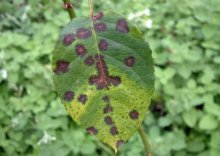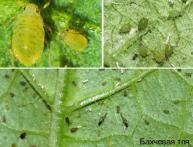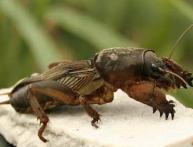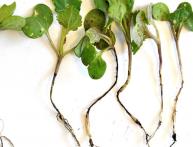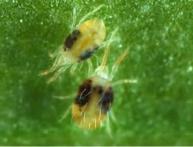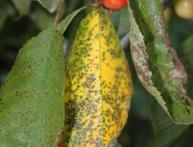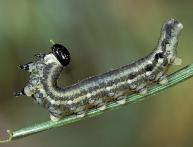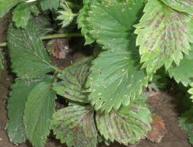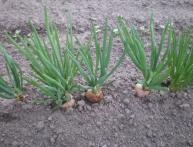Spotting on roses: a disease that requires treatment and prevention

The rose is a plant of unusual beauty and sophistication, which is probably why it is loved by all sorts of insects and parasites, which cause various diseases and even death. The most common flower disease is black spot on roses. To prevent it, it is recommended to take preventive measures. And if the bush is sick, then proper treatment is urgently required.
Content:
What causes rose spot disease?
Spotting on roses causes fungus Marssonina rosae, Cercospora Rosicola, Septoria, Sphaceloma rosarum, Peronosporaceae, Tobacco necrosis virus. The affected leaves of the plant become covered with pockmarks of different colors, depending on the type of disease. The volumes of these spots are different and when the fungus multiplies greatly, the spots completely darken and disappear:
- The fungus Marssonina rosae causes black-brown lesions on leaves in the second half of the summer season.
- Cercospora Rosicola is a fungus that creates round spots on leaves. These spots are brown in color with a dark rim and coating.
- Tobacco necrosis virus - this virus causes necrosis of some areas of the leaves, leading to darkening of the veins.
- The Septoria mushroom causes the disease Septoria, which is characterized by dark spots and a purple rim with pronounced fruiting bodies of the fungus.
- Sphaceloma disease (fungus Sphaceloma rosarum) is caused by small round spots with a purple border. Over time, the small spots lighten and black spores are visible on them - the body of the fungus.
- Downy mildew is caused by a fungus from the Peronosporaceae family. The disease is manifested by the appearance of vague dark red spots. Over time, the spots dry out, and a delicate gray coating forms under the leaf.
Important! Fungus survives winter on the shoots, which means that next summer they will multiply again on the plant if preventive measures are not taken.
Why do roses get sick?
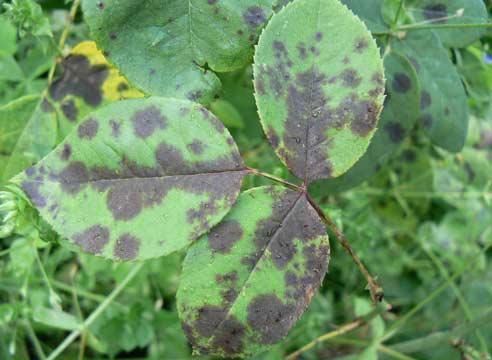
Plant damage occurs for the following reasons:
- The pruning was carried out contrary to all the rules, therefore, the cut site, which had been overgrown for a long time, served as a good breeding ground.
- Watering in the evening and at night.
- Planting infected plants nearby.
- Abundant watering or lack of moisture.
- Humid climate.
- Lack of sufficient microelements in the soil.
Treatment of roses for spot diseases
As soon as manifestations of any disease (rosary ripples) are detected, it is necessary to immediately begin treatment. First, destroy all affected leaves and prune the plant.
Secondly, use the following solutions for spraying bushes:
- Copper-soapy. Recipe: dissolve 200g of soap and 20g of copper sulfate in a bucket of water.
- Bordeaux mixture (1%). Recipe: dissolve 100 g of CaO (lime) and 100 g of copper sulfate in a bucket of water.
- Topsin-M solution (2–5%). Recipe: dilute 20 g of medicine in 10 liters of water.
It is important to carry out not a one-time spraying, but a systematic one. Every 10 days for a month and a half it is necessary to repeat the procedure, and if there are showers, then more often.
Preventive measures against spotting
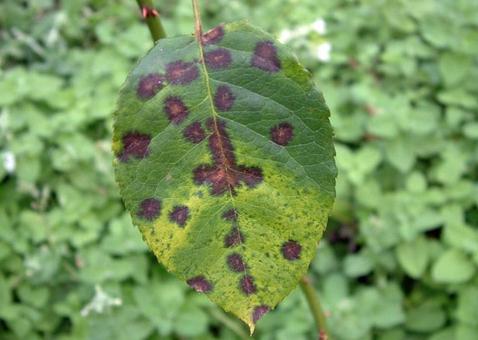
All varieties of roses are conventionally divided according to the type of immunity to spotted diseases:
- Susceptible
- Less susceptible
To make a susceptible variety less susceptible to spotting on roses, it is necessary to plant new healthy seedlings and care for them, following all recommendations for preventing the growth of spores:
- Treatment of a young plant before disembarking. It is best to treat with biological preparations (biofungicide, bactericide).
- Adding beneficial microelements and bacteria to the soil (biofungicide, potassium, ash, limestone in acidic soils).
- Proper planting of bushes is a certain distance between them.
- Timely removal of unhealthy and weak shoots, as well as formative pruning.
- Thinning bushes.
- Spring spraying with a copper-soap solution before buds open and at a temperature not lower than 100C or with chemical and biological agents.
- Feeding in the last days of May or in the first days of June.
- Use of agents to stimulate growth and immunity.
- A pleasant neighborhood with other varieties of flowers and plants. Lavender, sage, and catnip are more suitable for rose.
- Spraying with iron sulfate or other chemical and biological agent before covering.
- Removing all leaves and destroying them before covering the bush for the winter.
The fight and prevention of spotting on roses is the consistency and timeliness of actions that are aimed at destroying the fungal pathogen and preventing its proliferation with the help of solutions, treatment agents and fertilizers.
Video about rose diseases and how to combat them:
Interesting information about the vegetable garden

